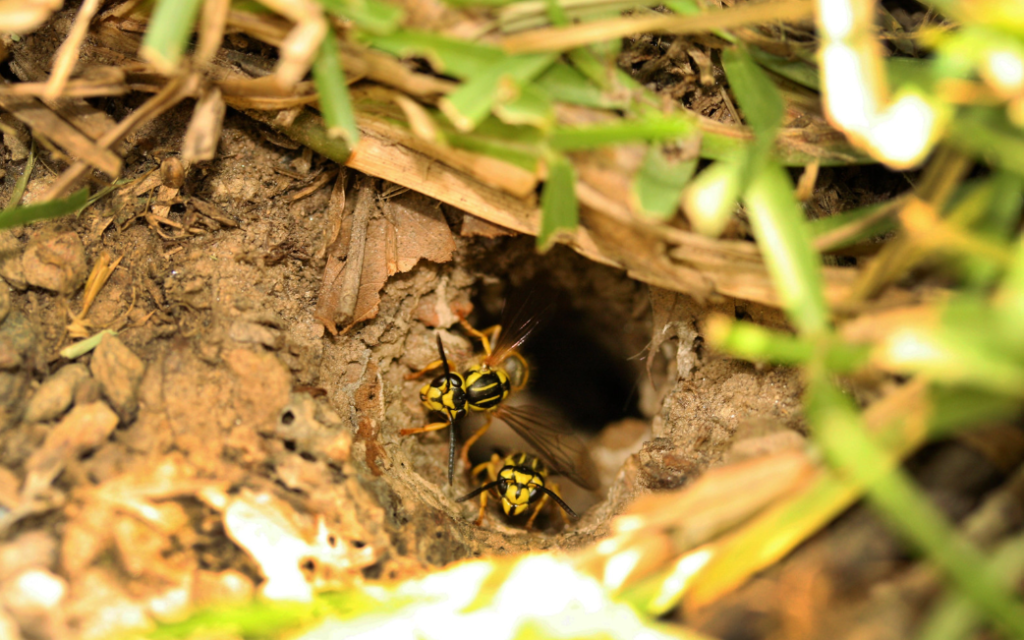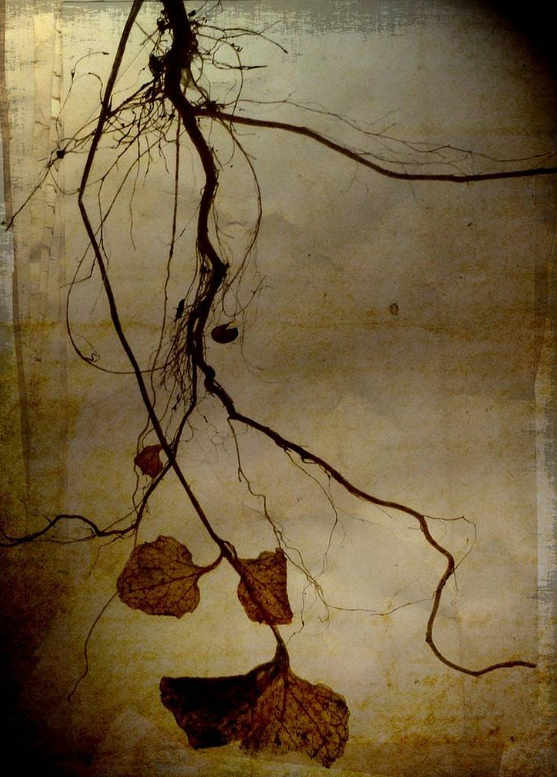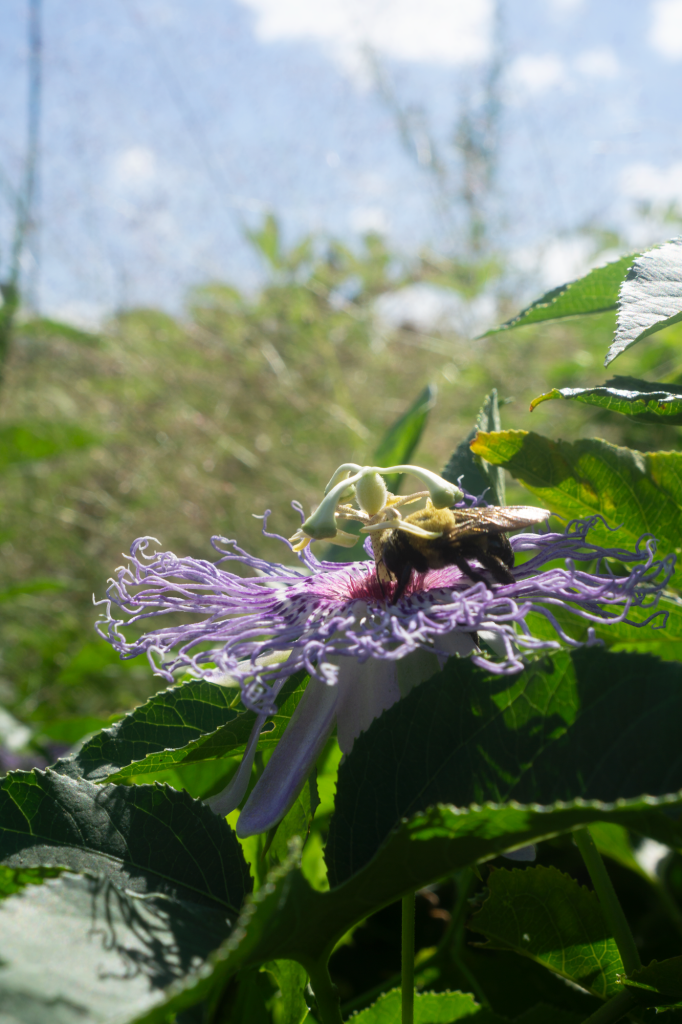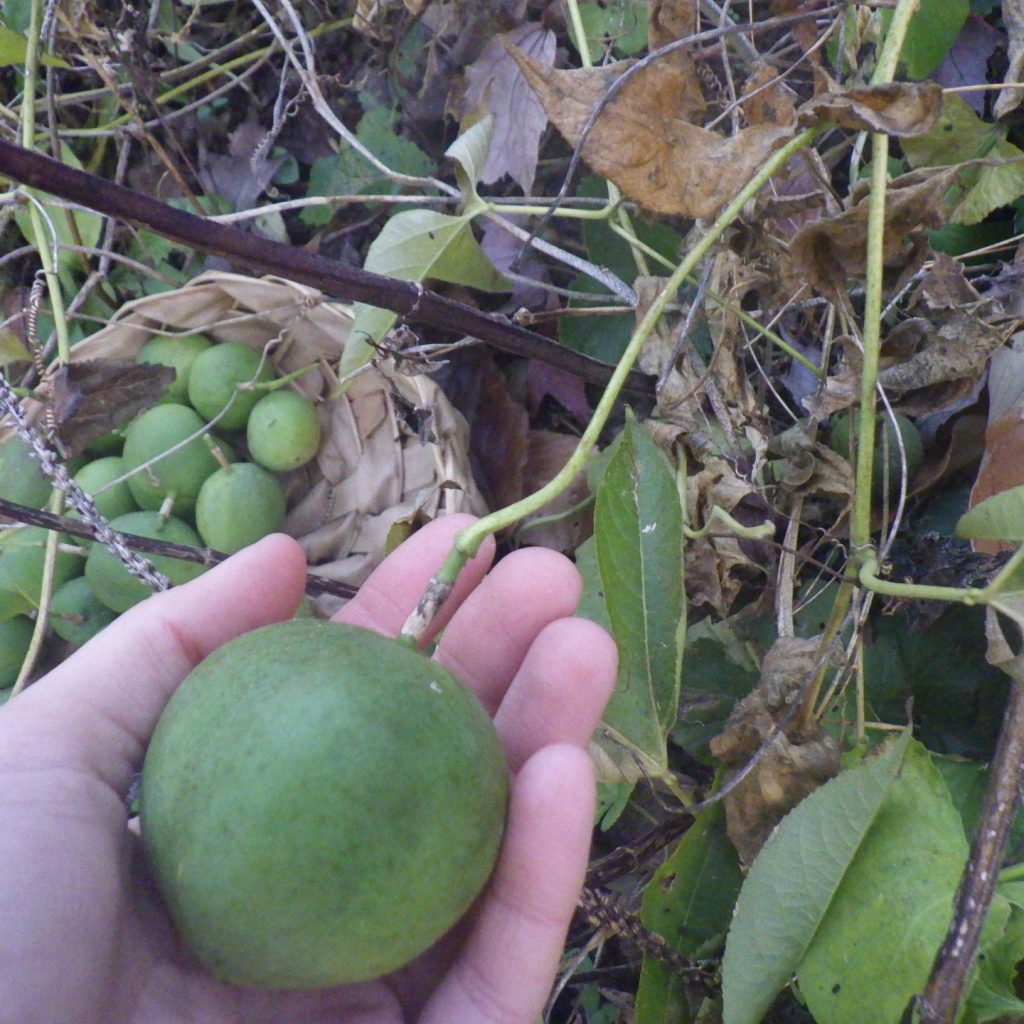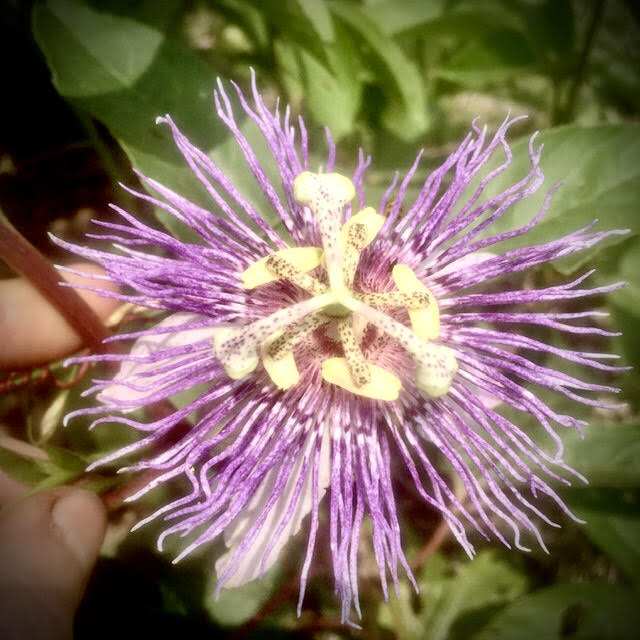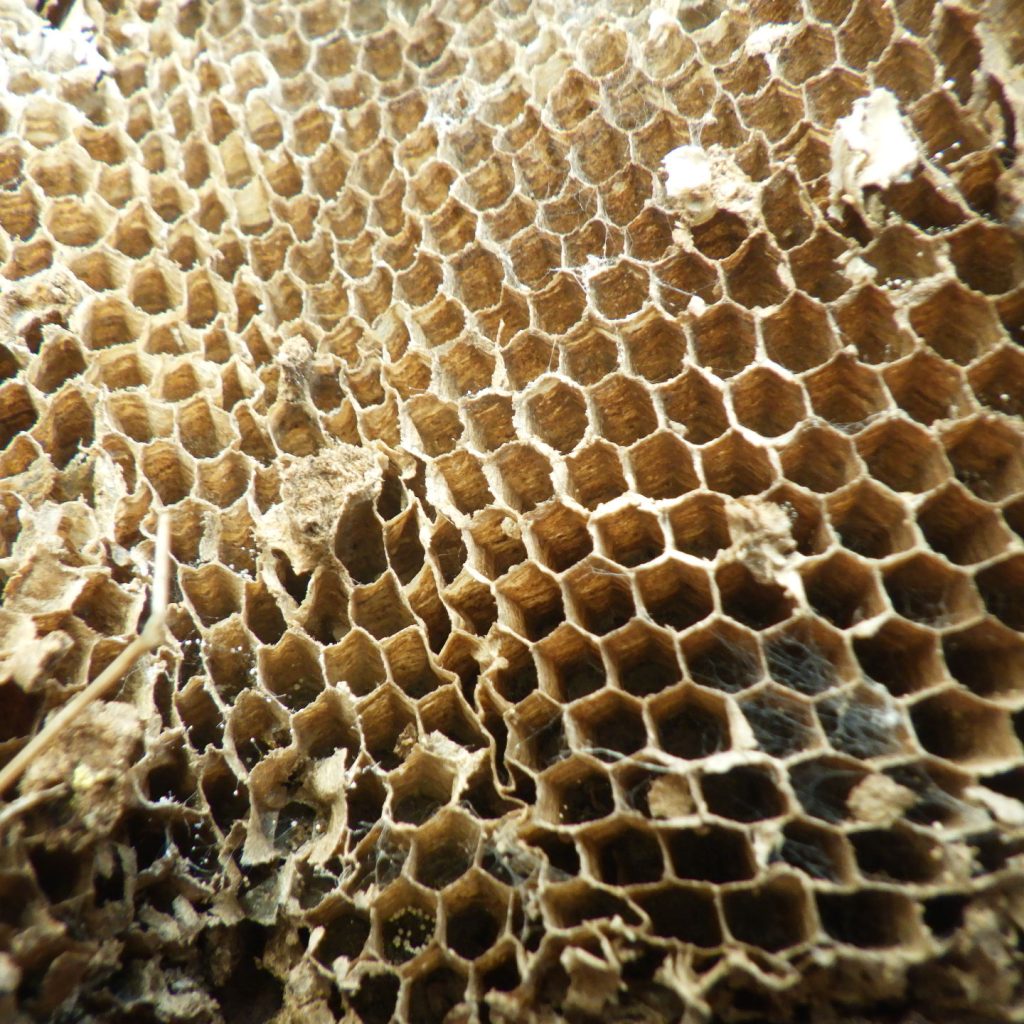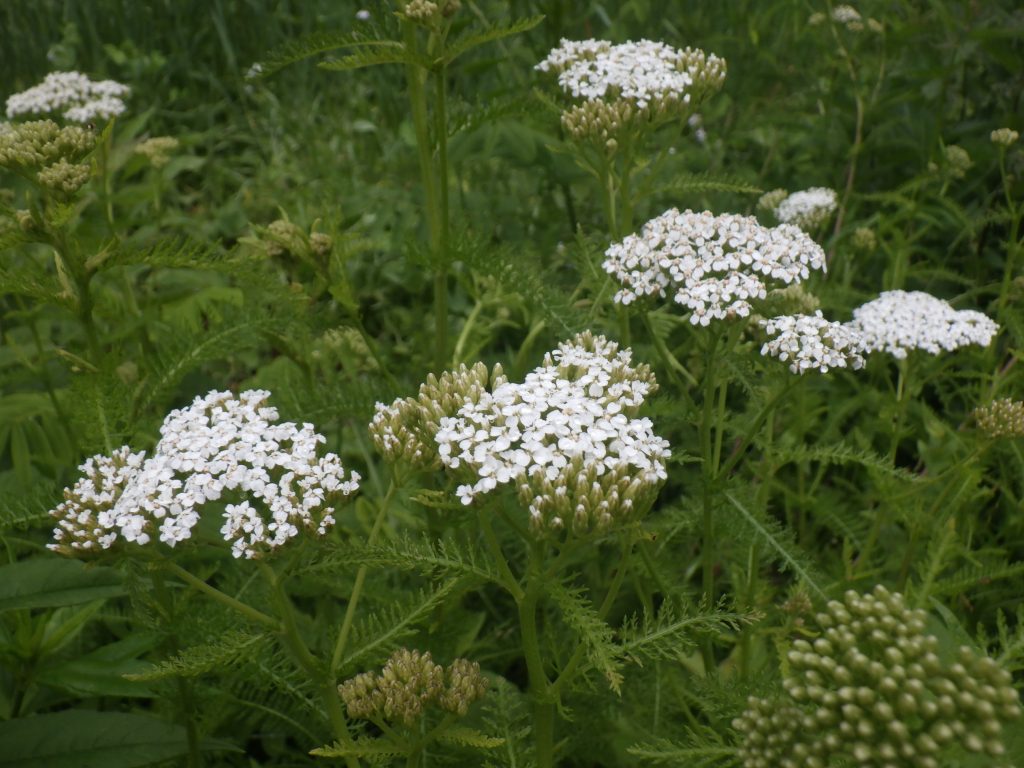
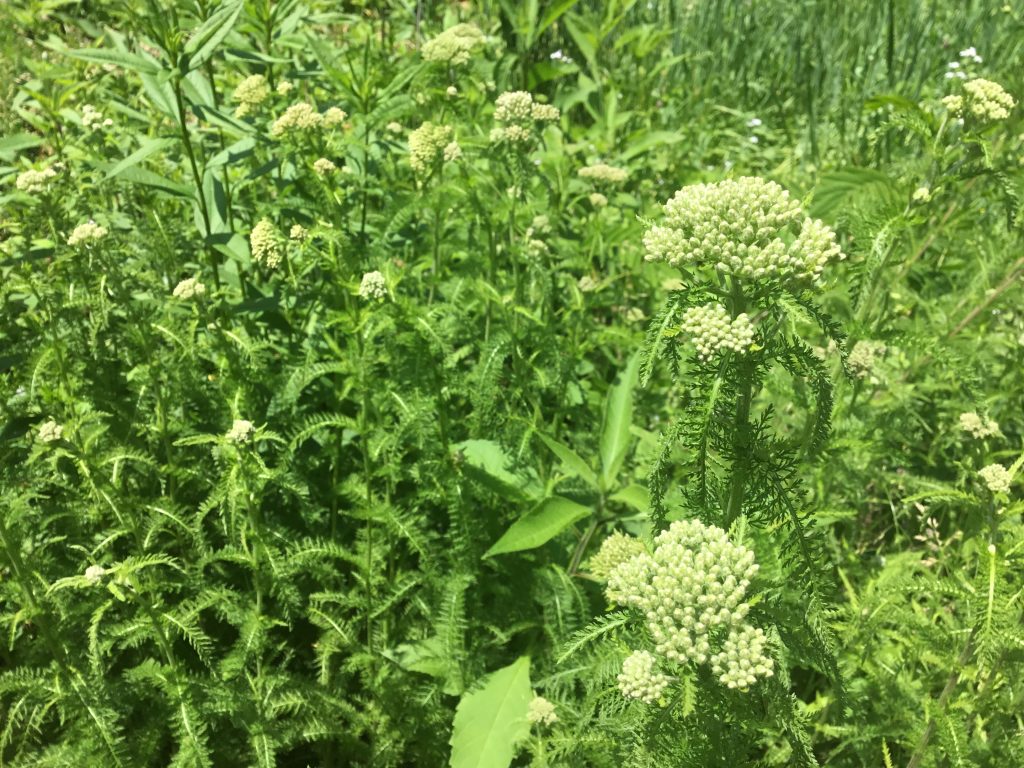
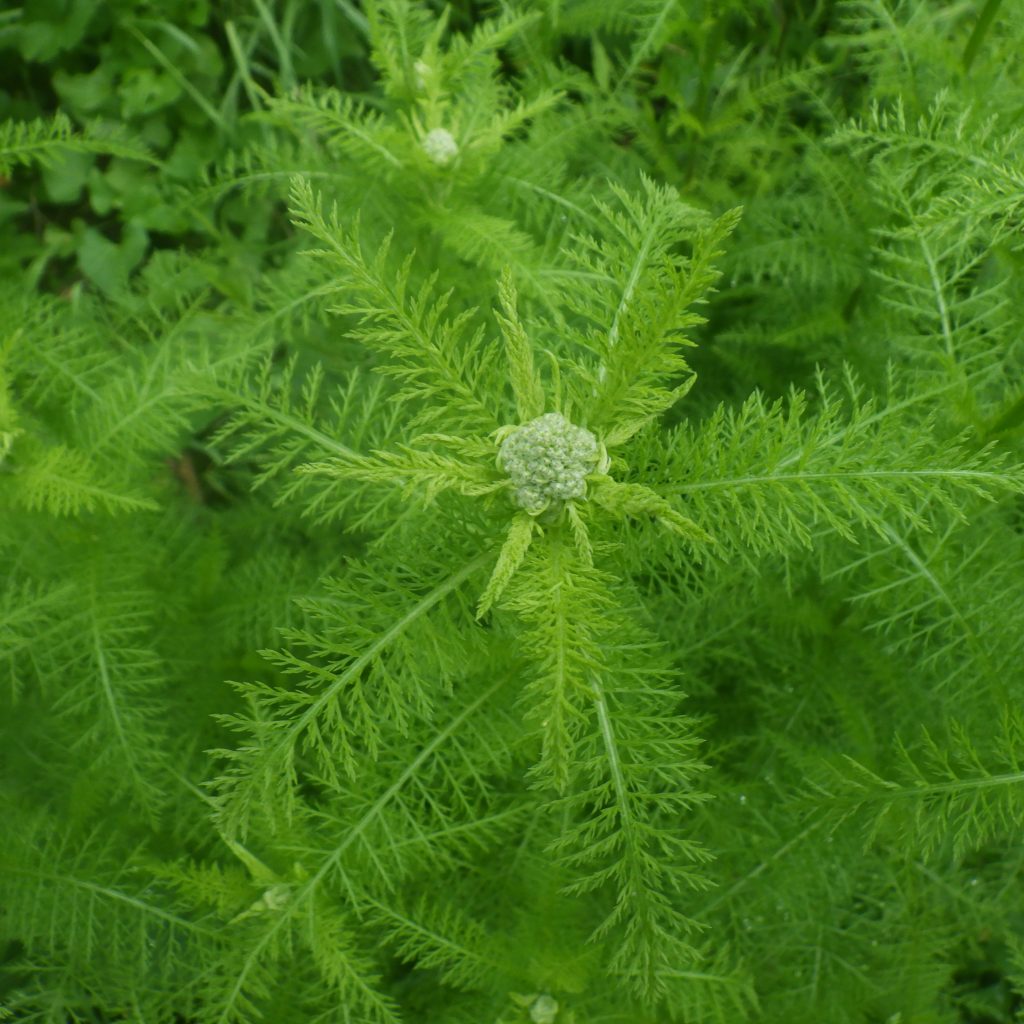
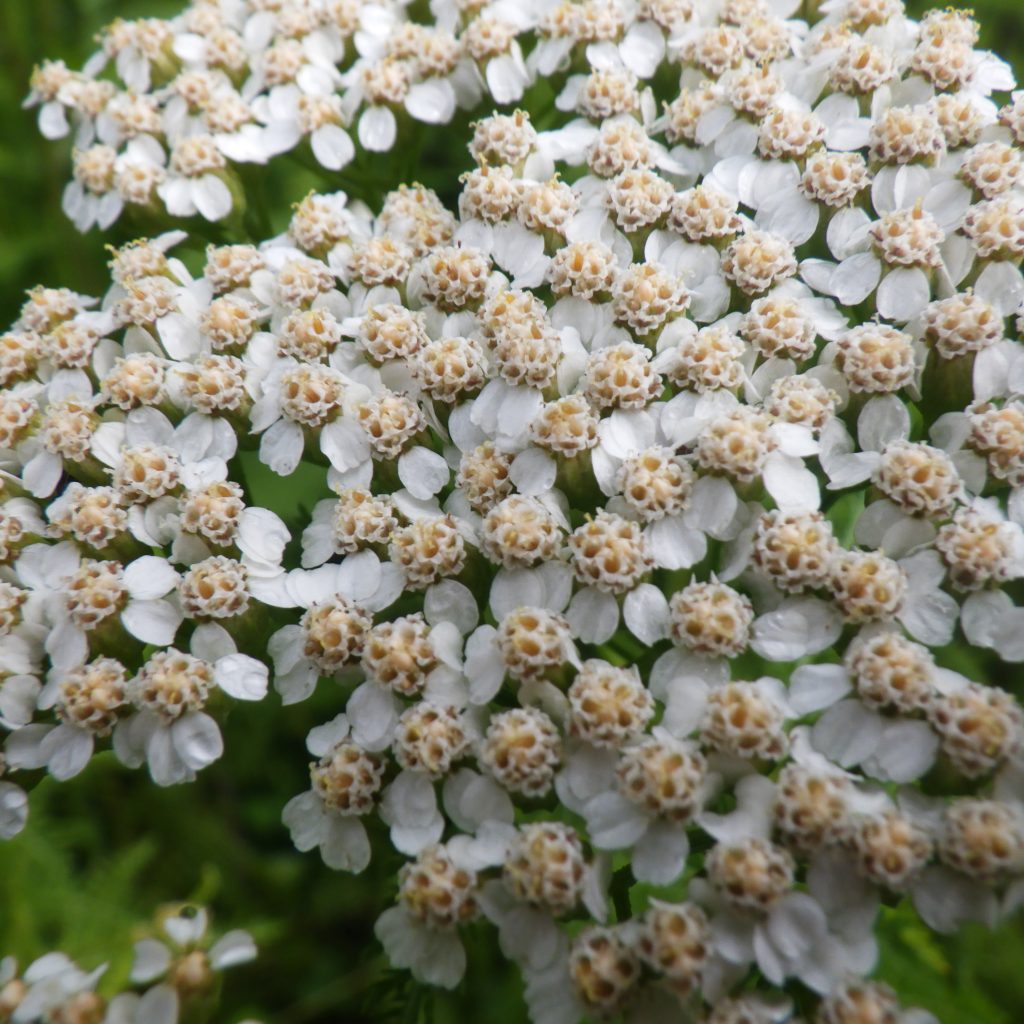
This year the nursery saw an overall increase in requests for bulk quantities of Yarrow; last year we thought we should stop seeding so many trays since not many people were buying them. I’m not sure what shifted, but I think it’s great, and I’m really leaning into Yarrow relationship this year! Yarrow to me is one of the number one native plants people should have in their gardens and/or “ecological restoration” projects. As part of my Community Herbalist training, I’ve been developing a Materia Medica focused on mostly bioregional plants that are especially helpful for the human needs and conditions that seem most present now or likely to be present in the near future. Yarrow was at the very top of my list, and probably the monograph I have spent the most amount of time putting together.
Not only does this plant have an astounding number of medicinal applications, but they are also a native plant that thrives in the role of an early successional generalist species. With times being as they are and places subject to more and more extremity through climate change and development projects that harm soil and ecological integrity, I give thanks for resilient plants who are able to thrive in difficult and quickly changing conditions and also provide aid and resources for others tangled up in the ecological webs that were and could be. Yarrow’s circumboreal distribution and long, long history of human relationship and medicinal practice has also captivated me. Yarrow is both a utilitarian medicine (first aid plant!) as well as a deeply complex and intelligent being able to balance several different organ systems in the body. As you’ll see below, they also have a strong association with oracular practices; intelligence, indeed. In the below monograph, you will find a lot more details about my personal relationship with yarrow, ecological patterns, lore and history, medicinal specifics and indications, energetic and spiritual patterns, and more. Join me in the celebration of Yarrow!
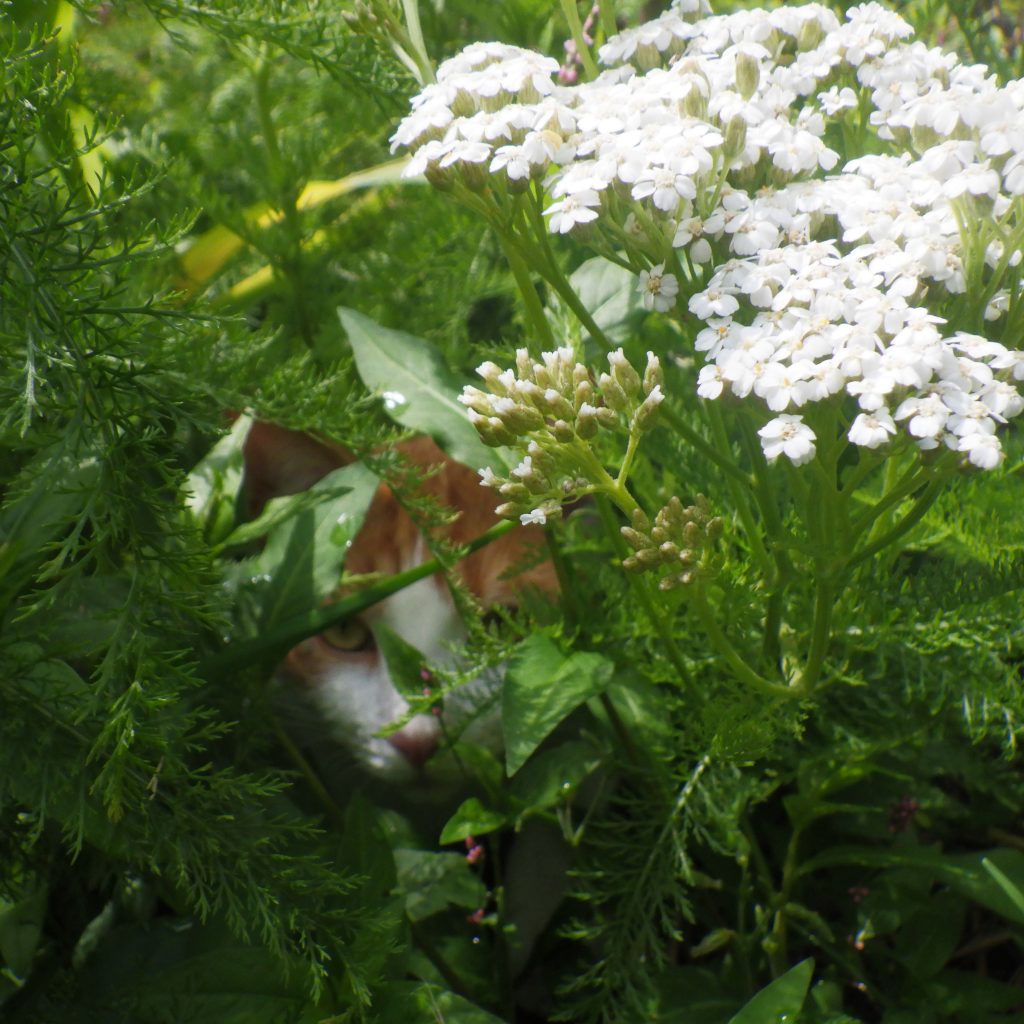
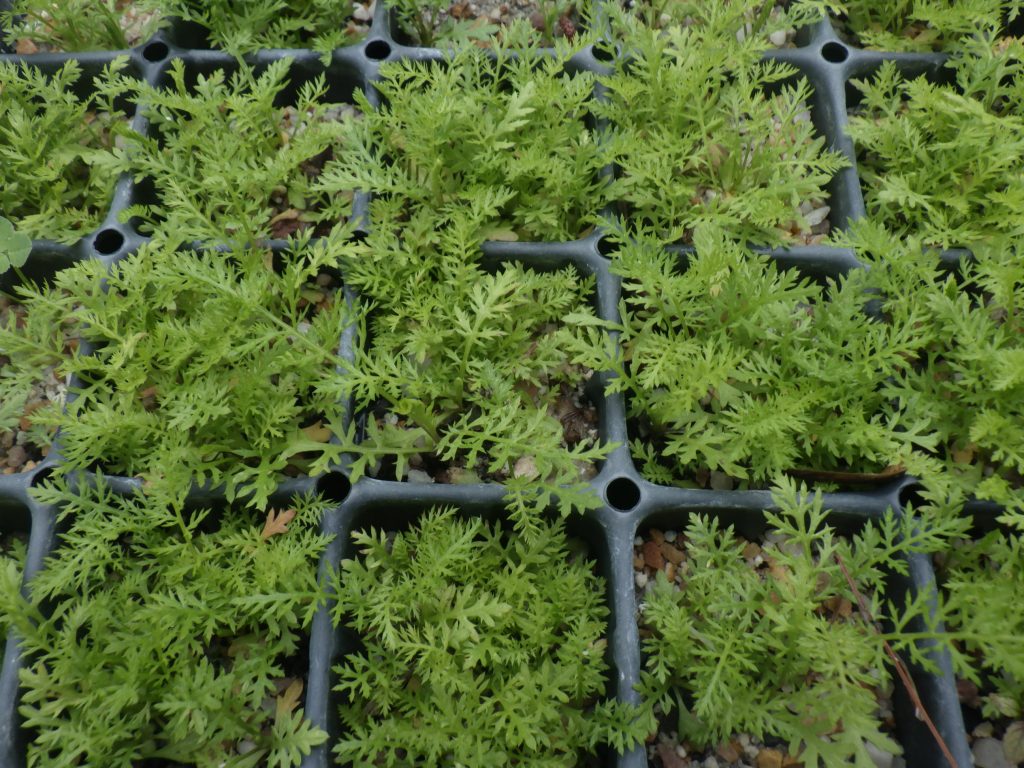
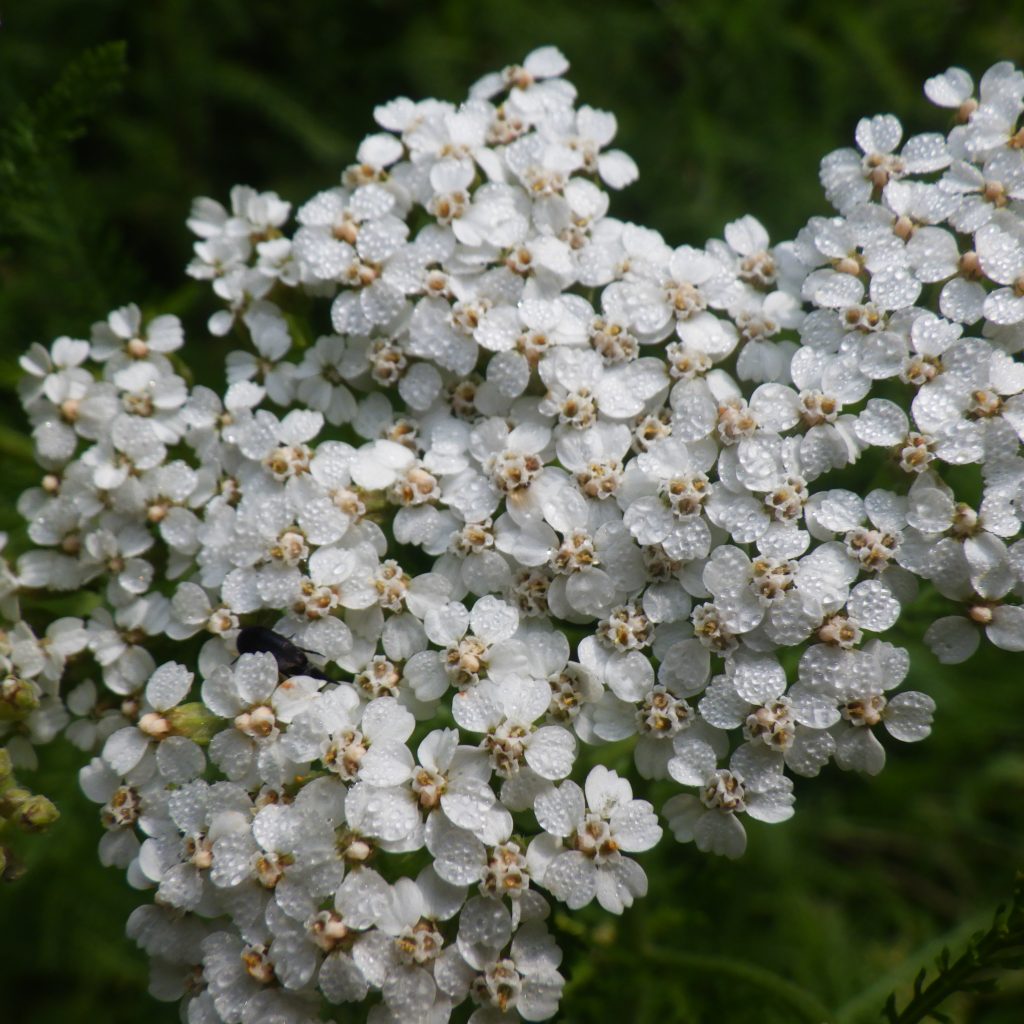
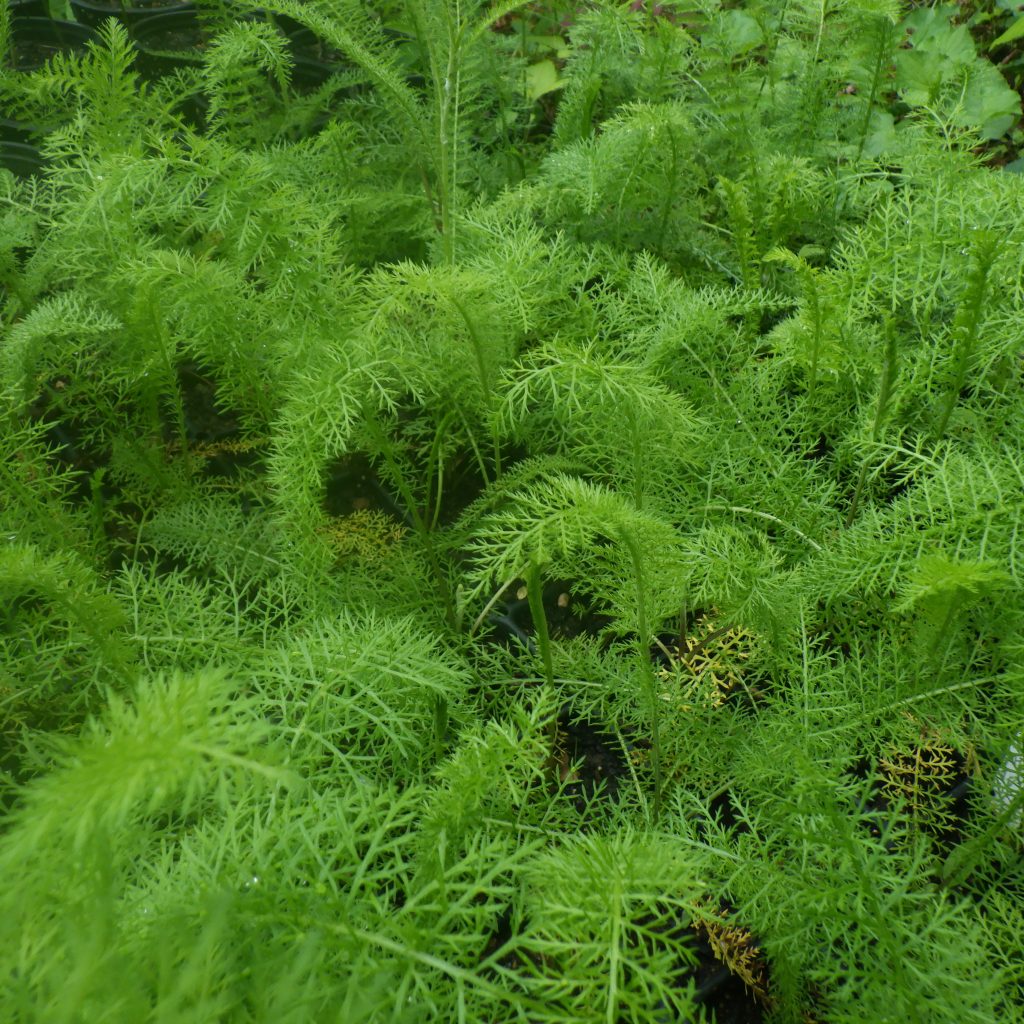
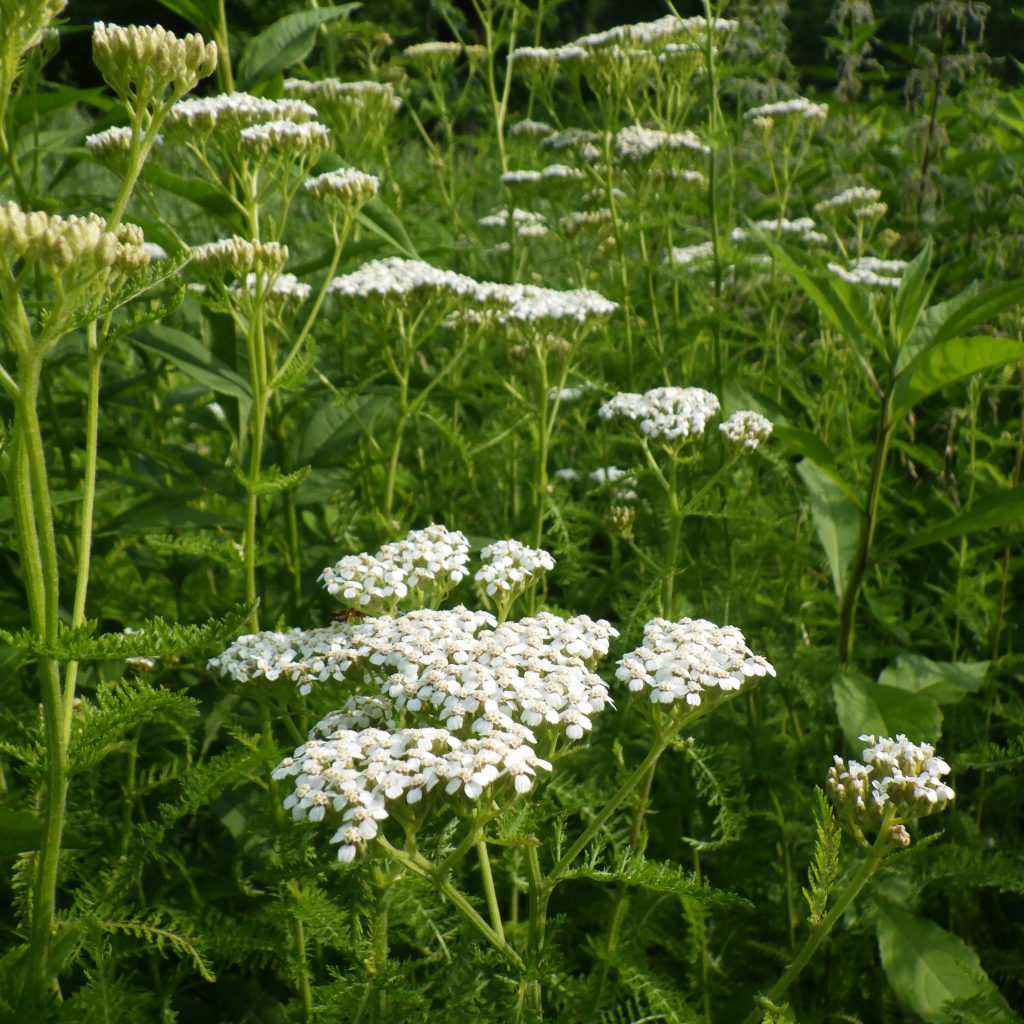
You may download a copy of the PDF below, or continue reading on this page.
MATERIA MEDICA
___________________________________________________
Yarrow
| NAMES Latin/Botanical: Achillea borealis, Achillea millefolium, Achillea lanulosa Common: Yarrow, Staunchweed, Thousand-leaf, Warrior Plant, Squirrel Tail Indigenous Names: Adjidamo’anûk; Wabe’no-wusk (Ojibwa); A’djidamo’wano (Chippewa) {~”Squirrel Tail”}; anshikemenshi (Lenape) Chinese: Richard Kunst…notes that the Chinese name for the plant, shi 蓍, “is probably related either phonetically or graphically through etymology and word magic to such other words as shi 示 “sign, signify,” zhi 旨 “meaning,” zhi 指 “finger,” ji 稽 “calculate, consult, inquire,” and suan 算 “counting tally, calculate.” Other: athair thalún in Gaeilge (= “Father of the Earth”) and lus na fola in Scots Gaelic (= “Herb of the Blood”) Etymology of the name Yarrow: from Middle English yarwe, from Old English gearwe, from Proto-Germanic *garwo, Old High German garawa {one source I found said these etymological roots may mean “to repair” but I couldn’t find any citations to back that up}; OR perhaps derived from *garu meaning “prepared, ready (of food)” as in a digestive aid. One source suggested “yarrow” may be derived from the Greek hieros, which means sacred {I also couldn’t find more etymological resources to support this theory, though it may be plausible} |
| KEY DESCRIPTIONS A robust herbaceous perennial that grows about 2-4 feet tall; strongly dissected and segmented leaves give the impression of feathery fern-like leaves – the narrower segments are disposed in various planes and aerially 3-dimensional; leaves and flowers have strong unique aroma; they have both taproot as well as spreading rhizomatous roots; the stems are stiff/erect often with a soft/downy hair on them (but not always); compound corymbs may consist of over 150 small flower heads (¼ inch long and across) that are tightly spaced to partially overlapping. Our local native species has white flowers. |
| HABITAT, RANGES, ECOLOGICAL RELATIONSHIPS In Virginia, Achillea borealis is a ubiquitous perennial in fields, meadows, roadsides, clearings, mesic to dry upland forests, and more. Considered native. As a genus, they have a circumboreal distribution and different species are native to many locations across North America, Asia, Europe, and naturalized in other areas. An early successional plant that can thrive in disturbed habitats and stabilize soil. Apparently has strong relationships with fungi and bacteria in soil and helps accumulate minerals for other plants to use in recovering ecosystems. Their root chemical secretions add to the vitality of neighboring plants and prevent disease. Their phytochemicals can also act as a natural pest deterrent. The foliage has been said to modify microclimates and assist with thermal regulation for surrounding areas. Yarrow is also one of the six medicinal plants used for special fermented preparations in Biodynamic Gardening to support and replenish soil life. Supports a variety of native insects. Cavity nesting birds have been observed using foliage to line their nests. Most yarrow on this continent seems to be used interchangeably in terms of medicinal use, with the exception of the garden center cultivars bred to have showier colors (not suggested to use medicinally). Our native plant nursery has gotten asked a lot what’s the difference between A. millefolium and borealis, so here is the short answer… A. millefolium is a very broad and constantly hybridizing and evolving species, which has “speciated” a lot when it crossed over the land-bridge into North America. The expressions of the plant that have adapted and evolved on this continent and in our region since then I guess are different enough from the “original” millefolium it came from that it makes sense to call them a different name. Even though A. borealis does descend from the Eurasian yarrow, their adaptations to their more recent home (arrival anywhere from 2million to 11,000 years ago) are notable. Some botanists note subtle morphological differences between A. borealis and A. millefolium. Achillea lanulosa also seems to be a common member of the Achillea millefolium “species complex.” As Applequist and Moerman summarize, “A. millefolium and related species form a messy, frequently hybridizing polyploid complex (including diploids through octoploids), with some species that had traditionally been placed in other sections being hybrids with some A. millefolium complex ancestry. Ploidy level is informative in the recognition of species.” Some phytochemistry studies suggest there may be different levels of volatile oils in the various yarrow species, and even within the same species plants with different “ploidy” levels (numbers of sets of chromosomes) may have subtle chemical differences and phenotypic expressions. All that being said, all the herbalists I know of use yarrow species interchangeably. |
| PARTS WORKED WITH Usually Leaf and Flower; some accounts of root being used particularly for analgesic properties such as for toothache or other pain |
| COMMON PREPARATIONS Dried herb for tea; Extraction in Apple Cider Vinegar; Tincture; Powdered; Fresh Poultice; Flower Essence; Wash/Soak; Oil/Salve; Hydrosol; Herbal Steam and/or Smoke inhalant |
| ENERGETICS AND THERMALS Cooling and warming; fluid-generating and fluid-controlling (astringent); opening (i.e. diaphoretic) yet also assisting with boundaries and containment. Per Matthew Wood: “Remedies with contradictory but complementary properties are often of great utility since they are able to normalize opposing conditions.” |
| TASTE Aromatic, bitter, acrid, pungent |
| ORGAN AFFINITIES Skin; Blood; Vascular; Gastro-Intestinal/Digestion – Liver, Gallbladder; Uterus |
| ACTIONS, VIRTUES Vulnerary (wound healing) and styptic (stops bleeding); aromatic, anodyne, analgesic, anti-inflammatory, antibacterial, antiseptic, antimicrobial, antiviral, antispasmodic, circulatory stimulant, astringent, stimulating diaphoretic, diuretic, hepatoprotective, vascular tonic, possibly immune stimulant |
| LORE, STORIES, HISTORY, ETC. -There are various reference to Greek Mythology involving Achilles and healing wounds. Some note that Achilles was a pupil of Chiron who taught him how to heal wounds of soldiers using the yarrow plant. Others say that Achilles’ mother dipped him in Yarrow tea to make him invulnerable (though this may be a confusion with the other version that she dipped him in the river Styx- either way, since she held him by the heel, that was the part of his body that remained vulnerable since it wasn’t dipped). -“Yarrow is one of the oldest known botanicals used by humans (sensu lato): it is among the six medicinal plants whose pollen was found in a Homo neanderthalensis grave at Shanidar, dated to 65,000 B.P. (Leroi-Gourhan 1975, 1998; Solecki 1975).” – Pliny and Dioscorides both wrote about Yarrow’s relationship to stopping bleeding; also noted that the stalks were carried as talismans of protection in battle; the physical medicine too was important in war -European protection lore, especially Slavic lore to ward off evil forces (hang above doors, under pillows; weave into amulets) “To the Anishinaabeg… it is said that evil will not cross a line of yarrow.” -Mary Siisip Geniusz -“In Ireland, yarrow was one of seven herbs that nothing natural or supernatural could injure. It had many numerous uses in folk medicine, hence another of its nicknames, ‘herb of the seven cures’; … in the outer Hebrides of Scotland, yarrow held against the eyes was believed to inspire the gift of An da shealladh, the ‘two sights’ or ‘second sight’”-Isla Skye -Yarrow beer has been brewed in Europe since the middle ages “In Appalachia it was stuffed up the nose to divine if one’s true love reciprocated the sentiment: “Green yarrow, green yarrow, you bears white blow, If my love loves me my nose will bleed now.” (Britten, James, Folk-Lore Record; as cited by Rebecca Beyer) – I Ching lore: “Milfoil or yarrow-stalk divination (shi 筮) is the second great divination tradition of ancient China. Usually associated with the Yijing, it was actually a form of divination much broader than just this one textual tradition. Originally making use of stalks of the milfoil or yarrow (shi 蓍) plant (Achillea sibirica or Achillea mongolica), whence it is sometimes referred to as achillomancy, milfoil divination involved the arithmetic sorting of the stalks to produce a numerical result” (Shaughnessy). -Over 76 different indigenous nations of Turtle Island have documented (i.e. shared with academic ethnobotanists) a variety of medicinal uses for the plant – in Moerman’s ethnobotanical compendium, Yarrow is listed as the number one plant with the greatest number of uses as a drug across Native American tribes; these usages overlap quite a bit with other ethnobotanical accounts from other peoples and continents. I find this cross-cultural overlap in medical indications compelling. |
| PHYSICAL MEDICINE Indicated for wounds whether physical or emotional – famously known for helping to stop bleeding of wounds; the anti-microbial and antibacterial actions are also helpful for first aid/cleansing; intelligently modulates all that relates to blood in the body; for releasing heat (such as fever or infections, generally assists with cold and flu care especially in early stages); digestive bitter (improves digestive secretions and fat absorption); assists with IBD, diarrhea and ulcers; liver detox; normalize menstrual flow; move stagnation; ease toothache (the light analgesic effect one will notice when chewing the fresh flowers and leaves is also applicable for pain relief elsewhere in the body, yet toothache is cited most frequently in ethnobotanical accounts, followed by headaches, then general pains); poultice for bruises, swellings, sores, and burns. |
| SPIRIT MEDICINE Energetic, emotional, spiritual, and psychic boundaries. Protective. Most people look to this plant to strengthen boundaries, and I have found this to be true; additionally, I feel that with their history in oracular practice, they deal also in the realm of porosity of boundaries/dimensions, if and when desired. Intelligence in working with boundaries/permeability, in the same way they are intelligently working with the blood in the body. Frieda Kipar Bay notes that “In Daoist shamanism, [Yarrow] is recognized as one of the first bridge plants, offering transport into the realm of plant intelligence.” Yarrow can also help us face our own weak spots/blind spots/”Achilles heel,” and I have found that the combination of protective shelter and oracular proclivity in this plant has allowed/forced me to see my truest feelings about a situation, even when that truth has been difficult to face or support through action. Some associate this plant with sacred warrior and/or “wounded healer” archetypes. Magical and Ceremonial uses include love charms, smoke offerings, warding off witches, and more. |
| CONTRAINDICATIONS AND SAFETY NOTES Generally safe herb – “The claim that yarrow has been shown to be specifically contraindicated during pregnancy is based on a single low-quality rat study the results of which were incorrectly interpreted.” Still, pregnant people should err on the side of caution, as some know this plant as an emmenegogue (brings on period). Caution for anyone allergic to Salicylates Stockley’s “Herbal Medicines Interactions” doesn’t list any herb-drug interactions, but given what we know about this herb, people on bloodthinning medications should be cautious; discontinue before surgeries |
| DOSAGE GUIDELINES Guidelines from 7song: “For internal infections use tea, tincture, or glycerite. Start with a large loading dose, around 2-4 ml, and then take 1-2 ml about every 4 hours. For external infections use a compress, salve, raw herb or poultice. For digestive difficulties, take about 5-10 drops as needed.” Personal notes: Dried herb for a long-steeped tea that is cool or room temperature rather than hot is especially useful for digestive and liver complaints. A hot tea would be more useful for the diaphoretic and fever-breaking aspects. For an Apple Cider Vinegar bitters extract, 20-30 drops can be taken 15 minutes before meals to assist with digestion and assimilation. Hydrosol spray or drop-doses of tincture or essence can be used to focus more on the energetic field or emotional imbalances. |
| MEDICINE-MAKING -Always have yarrow growing in the garden for fresh poultice or wash -Dried yarrow (blend of flowers and leaves) for tea making or powdering -Extraction in Apple Cider Vinegar great for digestive uses (use wilted leaves and flowers) -Fresh plant is best for alcohol tincture – 1:2 weight of herb to volume of high-proof alcohol if possible. Often without a very high powered blender it is not possible to reach such a proportion and ends up being more like 1:3. – For surface scrapes, poultice on the wound works; if it is a very deep/open cut, best to keep plant material particles out of the wound so use gauze barrier/soak in strained tea/in a pinch can use tincture -Hydrosol can be used both as an auric spray to support personal energetic boundaries and gentle protection, but can also be sprayed on wounds or any area of skin irritation or inflammation |
| GROWING Easy to grow from seed; a very resilient plant. Prefers Sun, tolerates part shade. Moist to Dry soil. Tolerates droughts. Spreads by rhizome, easy to divide/share. |
| PERSONAL RELATIONSHIP I first developed a personal relationship with this plant almost a decade ago in the flower essence form to assist with strengthening energetic, emotional, and psychic boundaries. Later, in 2021, I worked at a holistic therapeutic community residence with an emphasis on helping people who wanted to taper off of psychotropic drugs. I was trained in administering Yarrow Compresses to the residents 3x a week during their afternoon resting period. This is apparently very common in anthroposophical clinics in Europe. A strong yarrow tea is brewed, the compress soaked in it and placed over the liver for a period of time (kept warm with hot water bottle). This helps with detoxification for taxed livers. There have also been case studies showing it helps with fatigue, bowel movements, regulating sleep. Yarrow and Nettle tea was also a typical morning tea for the residents. I feel that the frequency of interaction with Yarrow also had the effect of helping the residents with emotional and psychic boundary-work, which is often key for folks with certain psychiatric diagnoses, especially when “psychosis” is a symptom. More recently, my personal relationship with yarrow includes: go-to plant for cuts and scrapes, dried herb included in tea blends for cold/flu care, and an ingredient in digestive bitters blend. I am now also experimenting with making hydrosols, and this has revealed that the beautiful blue-colored Chamazulene distills out from this plant, very similarly to Chamomile. I grow this plant in the native plant nursery and enjoy helping to spread their populations locally, though they don’t really need our help. I have been proximal to others using the stalks for traditional divination purposes, who have reported a strong feeling/communication from the plants during the harvesting that the Yarrow was thrilled to be involved in this process. Personal meditation practice with this plant affirms indications such as relationship with blood, working intelligently with boundaries and shifting permeability as needed, and providing respite/shelter/protection. In applying hydrosol to my head and face at night, and/or sleeping near the herb, I have found my dream life intensified, at times with direct advice and insight offered to me and/or prophetic dreams. |
| SCHOLARLY RESEARCH, CLINICAL TRIALS, ETC. The article by Chandler et al discusses phytochemistry of Yarrow and how the constituents support some of the traditional and folkloric uses of the plant. For instance, it has been demonstrated that the alkaloid “achilleine” is an active hemostatic agent (Miller and Chow, 1954). Winston and Kuhn list more constituents: -Monoterpenes such as linalool, camphor, borneol, and eucalyptol are antimicrobial and antioxidant -Sesquiterpenes such as chamazulene are anti-inflammatory and antiallergenic -Flavanoids such as apigenin, artemetin, casticin, luteolin, and rutin show antispasmodic activity and improve diarrhea, flatulence, and cramping -Sesquiterpene lactones such as achillicin, achillin, leucodin, achillifolin and millefin are anti-inflammatory and contribute to digestive bitters -Alkaloids such as stachydrine and achilleine are hemostatic Applequist and Moerman’s paper reviews studies and preclinical experiments (mostly done on mice) that support the following virtues of Yarrow: antimicrobial, anti-malarial, anti-inflammatory, anti-spasmodic, heals chronic ulcers, hepatoprotective, and more. While this is interesting, did we really need to exploit the mice to confirm what people already knew for thousands of years? |
| SOURCES REFERENCED -7song’s Herbal Database and Resources -Applequist, W.L., Moerman, D.E. Yarrow (Achillea millefolium L.): A Neglected Panacea? A Review of Ethnobotany, Bioactivity, and Biomedical Research1 . Econ Bot 65, 209–225 -Compost Preparations, Biodynamic Association -Digital Atlas of the Virginia Flora, entry for Achillea borealis –Energetic Herbalism by Kat Maier –Ethnobotany of the Lenape Indians and Other Eastern Tribes, compiled by Shelley DePaul -Kunst, “The Original Yijing.” -Mary Siisip Geniusz , Plants Have So Much to Give Us, All We Have to Do Is Ask -Materia Medica of Now and Then Herb School (Sam Roberts and Renée Camila) -Matthew Wood, The Earthwise Herbal -Polyploidy and ecological adaptation in wild yarrow Proc. Natl. Acad. Sci. U.S.A. 108 R. F. -Chandler, et al. “Ethnobotany and Phytochemistry of Yarrow, Achillea Millefolium, Compositae.” Economic Botany, vol. 36, no. 2, 1982, pp. 203–23. JSTOR -Shaughnessy, E. (2022). “Chapter 4 Milfoil Divination”. In The Origin and Early Development of the Zhou Changes. Leiden, The Netherlands: Brill. -The Druid’s Cauldron (Isla Skye), Yarrow of the Seven Cures –The Flora of Virginia by Alan S. Weakley, J. Christopher Ludwig, and John F. Townsend -Wild Witchcraft, by Rebecca Beyer -Winston & Kuhn’s Herbal Therapy and Supplements: A Scientific and Traditional Approach, by Merrily A. Kuhn and David Winston -Yarrow Liver Compress: https://www.pflege-vademecum.de/schafgarben_leberwickel.php?locale=en |
